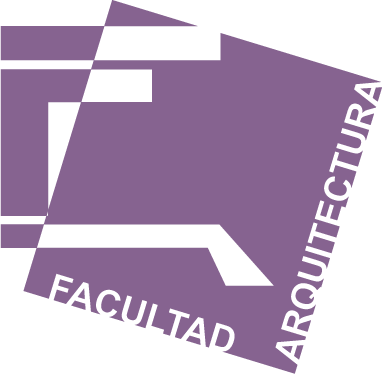Registro completo de metadatos
| Campo DC | Valor | Lengua/Idioma |
|---|---|---|
| dc.creator | López Uribe, Cristina | |
| dc.date.accessioned | 2025-01-23T22:20:06Z | - |
| dc.date.available | 2025-01-23T22:20:06Z | - |
| dc.date.issued | 2017-05-30 | |
| dc.identifier | https://www.revistas.unam.mx/index.php/bitacora/article/view/59705 | |
| dc.identifier.issn | ISSN electrónico: 2594-0856 | |
| dc.identifier.issn | ISSN impreso: 1405-8901 | |
| dc.identifier.uri | https://repositorio.fa.unam.mx/handle/123456789/19485 | - |
| dc.description.abstract | Henceforth space by itself, and time by itself, are doomed to fade away into mere shadows, and only a kind of union of the two will preserve an independent realityHermann Minkowski, 1908In his book Space, Time and Architecture (1939), Sigfried Giedion explained that high-speed travel and new means of communication contributed to create the fragmented experience that characterized the modern metropolis. According to Giedion, the modern movement fused, for the first time, the experience of interiority and exteriority, created the simultaneous spatial perception of the different levels of the buildings, and forced the viewer to move to address the different facets of a building. In this way, he introduced the temporal dimension referenced by Cubism. Cubist masterpieces exemplify a new integration of space and time based on the movement, fragmentation, and re-construction of images. From that moment, architects and artists abandoned the idea of an exterior world of static objects –as shown by perspective representation and linear narrative– and entered the dynamic, experiential reality of perception and human consciousness. Today, space and time are even more compressed than in the early twentieth century.For centuries architecture has aspired to longevity and permanence, however, we are increasingly designing buildings that will have a short life expectancy as defined by the expiration of the materials. Acceleration, as a condition experienced everywhere within capitalism, makes every human activity and its products ephemeral. Industrial design has taken this into account and obediently developed the concept of planned obsolescence while, at the same time, transcendence is still being taught to be one of the great aims of architecture.Urban developments are inconceivable outside of time. The inability or difficulty of planning and of making urban designs or regulations for neighborhoods and cities show, time and again, that the city is a living organism and in constant mutation; most of the time unpredictable in, what would be, a direct and scientifically measurable way. Efforts to do this can be seen in maps of peoples’ movements in urban space, which need to be compared with subjective information gathered by other means.In landscape architecture, time is a fundamental element. Designed landscapes can influence our individual sense or our understanding of temporality –our experience of how time pas-ses. They can compress or elongate our perception of time. These projects take into account the passing of the seasons, the life span of every species, and the geological memory of each site. In contrast to the closed notion of architecture, when a landscape is considered finished this does not mean that it is frozen in some glorious moment: with landscape architecture it becomes more evident that only through the passing of time designed environments acquire their meaning.A large part of present architecture –and its teaching– ignores or denies the transformations occurring in the world of technology. New technologies allow ubiquity, simultaneity, instantaneity, virtuality, remote interactivity, and real-time computing. Today, these concepts are part of our everyday life; the more the means of communication bring us closer to each other the more they separate us spatially. At the same time, we are experiencing a delay in time: every thousandth of a second expands until it is perceived as eternal. This is especially true in our interactions with new technologies that promise immediacy.Designs should follow an aesthetic philosophy and understanding of the world based on the fleetingness or impermanence (the transitory or the non-permanent) that best describe our experience in the world. The flexibility of designs could allow them to adapt to other moments and other uses that are different from those foreseen at the time of their planning.Contemporary architecture seems to have the goal of staying young, shiny, and perfect but time stains and soils its surfaces. The impressions made by time –the patina– underscore its shapes and the way rain and sunlight hit its surfaces. It is possible to foresee in the buildings the effects of time, chronological and meteorological, in the same way that a landscape architect does.There is a current tendency to constantly renovate our built environment –we even erase our recent past. Ruined buildings or neighborhoods tell a non-official history of the places; they are our link to what is gone and reveal the fragments of the distant past. These fragments are important for discovering our present, even (or especially) when they are about a history that is not the authorized one; they harbor the memory of a culture in constant and rapid change. Ruins should not be rebuilt to fit our idea of the past. Sometimes they are not beautiful, but neither is history. Rebuilt buildings look foreign and divorced from their history; renovated towns and cities are awkward, as they appear to sparkle and be perfect in their novelty.The disorder and decay of ruins and abandoned buildings indicate to us that time has continued and that change has occurred. They acquire a different meaning than originally intended for the design; their original function is lost over time and by lack of use. To see them bring us the possibility of reflecting and taking advantage of the time we have left. Despite modern technology and our continued longing to be relevant, things (and our small role in the universe) all have an expiration date.Cristina López Uribe | |
| dc.format.extent | Páginas: 2-3 | - |
| dc.language | spa | |
| dc.publisher | Universidad Nacional Autónoma de México. Facultad de Arquitectura | |
| dc.rights | La titularidad de los derechos patrimoniales de esta obra pertenece a las instituciones editoras. Su uso se rige por una licencia Creative Commons BY-NC-ND 4.0 Internacional, https://creativecommons.org/licenses/by-nc-nd/4.0/legalcode.es, fecha de asignación de la licencia 2017-05-30, para un uso diferente consultar al responsable jurídico del repositorio por medio del correo electrónico editora.bitacora@fa.unam.mx | - |
| dc.subject.classification | Multidisciplina | |
| dc.title | Editorial Landscape_City_Time_ | |
| dc.type | Artículo de Divulgación | |
| dcterms.audience | Publico en general | - |
| dcterms.provenance | Universidad Nacional Autónoma de México. Facultad de Arquitectura | - |
| dc.rights.holder | La titularidad de los derechos patrimoniales de esta obra pertenece a: Universidad Nacional Autónoma de México | |
| dc.publisher.location | MX | |
| dc.rights.accessRights | Acceso abierto | |
| dc.identifier.url | https://www.revistas.unam.mx/index.php/bitacora/article/view/59705/52647 | |
| dc.identifier.doi | https://doi.org/10.22201/fa.14058901p.2017.35.59705 | - |
| dc.relation.ispartofjournal | Bitácora Arquitectura; Núm. 35 (2017): Paisaje Ciudad Tiempo | |
| dc.description.repository | Repositorio Facultad de Arquitectura. https://repositorio.fa.unam.mx/ | |
| dc.identifier.bibliographiccitation | López Uribe, Cristina (2017). Editorial Landscape_City_Time_. Bitácora Arquitectura; Núm. 35, 2017: Paisaje Ciudad Tiempo ; 2-3. Recuperado de | - |
| Aparece en las colecciones: | Bitácora Arquitectura | |
Los ítems de DSpace están protegidos por copyright, con todos los derechos reservados, a menos que se indique lo contrario.

